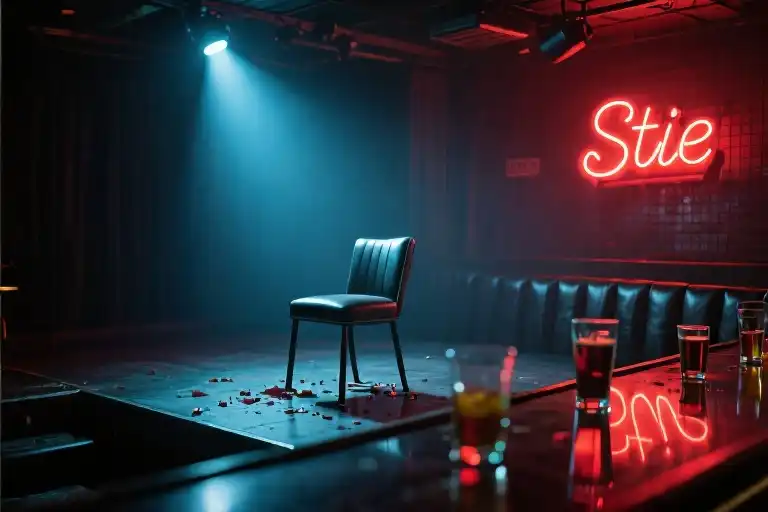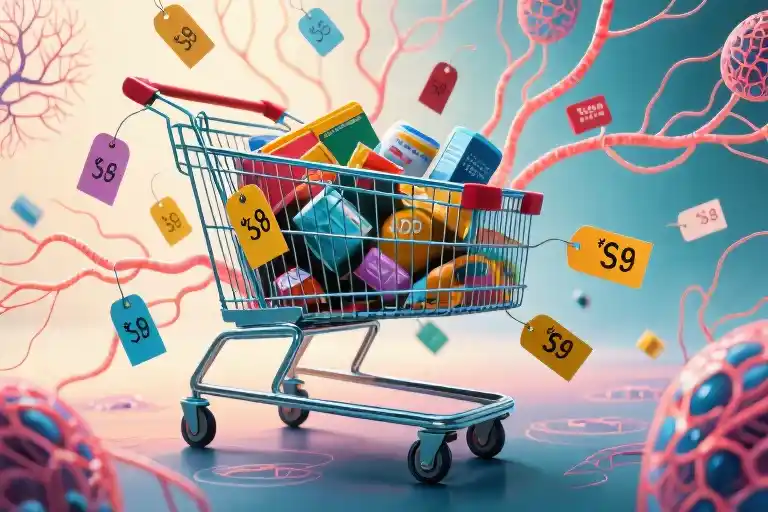The lights are dim, the music pulses, but the chairs remain empty. At a strip club in downtown Austin, dancer Vulgar Vanity checks her phone for the third time that night—still no customers. Just a year ago during the Formula 1 Grand Prix weekend, she’d easily clear five figures in a single shift. Now? “I walked into a completely empty club and didn’t make any money at all,” she confesses. Three blocks away, craft beer taps gather dust as regulars switch to supermarket six-packs. These aren’t isolated incidents—they’re recession warning lights flashing bright red in places GDP reports never mention.
You’ve felt it too—that creeping unease when your grocery bill doubles while your paycheck stays flat. The strange hollowness in usually bustling bars on Friday nights. Economists may debate technical definitions, but the truth lives in these everyday spaces where people vote with their wallets. When even “recession-proof” industries like adult entertainment and alcohol start bleeding, it’s time to pay attention.
What makes these signals so revealing? Strip clubs and craft breweries operate at the intersection of disposable income and discretionary spending—the first budget items cut when wallets tighten. Unlike traditional indicators lagging behind reality, these frontline businesses reflect economic shifts in real time. As Vanity puts it: “When guys stop spending on lap dances, you know they’re worried about rent.”
The beer aisle tells a parallel story. That $18 IPA four-pack collecting dust? Sales of premium craft beers dropped 15% this year as drinkers trade down to mass-market brands. “Beer is a discretionary spend and a social spend,” explains a brewery owner in Chicago who recently closed two locations. “People aren’t cutting back on groceries or gas—they’re skipping the extras that make life enjoyable.”
These vignettes form a pattern mainstream metrics miss. While unemployment numbers might look stable, the disappearance of “fun money” reveals deeper financial stress. It’s the bartender who notices tips shrinking despite steady traffic. The exotic dancer seeing fewer regulars. The microbrewery owner watching patrons split single beers. These are the canaries in our economic coal mine—and their song has turned ominous.
Next time you pass a half-empty nightclub or see premium beers on clearance, remember: economic shifts don’t start in Wall Street boardrooms. They begin in the quiet moments when someone chooses tap water over cocktails, or drives past their favorite strip club without stopping. The recession isn’t coming—it’s already here, whispering through empty stools and unsold six-packs.
When the Lights Dim: Unconventional Recession Signals You Can’t Ignore
The champagne bottles gather dust in VIP rooms that once pulsed with laughter. Neon ‘Open’ signs flicker over empty parking lots where luxury cars used to queue. This isn’t a morality tale – it’s your front-row seat to an economic unraveling most headlines miss.
Strip Clubs: The Canary in the Coal Mine
Vulgar Vanity remembers the nights when hundred-dollar bills rained like confetti during Austin’s 2022 Formula 1 weekend. “Six figures in four days wasn’t unusual,” the veteran dancer shares. Fast forward to 2023: “I walked into a ghost town on what should’ve been South by Southwest’s busiest night. Not a single customer.”
This isn’t isolated. HuffPost reports strip clubs nationwide are seeing unprecedented vacancies – a phenomenon economists call the “Lap Dance Index.” When disposable income dries up, adult entertainment becomes the first discretionary expense cut. The math is simple: no bonuses → no bachelor parties → no dollar-bill waves.
Beer: The Working-Class Barometer
Meanwhile, your local craft brewery tells another chapter of this story. That $12 IPA flight collecting dust on tap? Sales of premium brews dropped 15% this year according to Brewers Association data. “People still drink,” explains a Denver taproom owner, “but they’re switching to $1 PBR tallboys at grocery stores.”
This bifurcation reveals deeper trends:
- Happy Hour Exodus: Bars report 30% fewer after-work crowds
- Home Drinking Boom: Liquor stores see spike in budget spirits
- The ‘PBR Effect’: Cheap beer sales up 22% while craft beers decline
What makes these signals powerful? They’re unfiltered. GDP reports get revised; unemployment figures get massaged. But when a stripper’s g-string stays empty and microbreweries start shuttering, the economy isn’t lying.
The Human Stories Behind the Numbers
When economic reports flash warning signs, the real impact unfolds in places most analysts never mention—like dimly lit dressing rooms of half-empty strip clubs, or the tapped-out kegs at your local craft brewery. These aren’t just data points; they’re livelihoods crumbling at the edges of our economy.
The Strip Club Barometer
In Austin, Texas—a city synonymous with live music and late-night excess—the silence in upscale gentlemen’s clubs tells a disturbing story. Dancer Vulgar Vanity, who once cleared six figures working major events like Formula 1 weekends, now faces unprecedented emptiness. “Walking into a ghost town on what should be our busiest nights? That’s never happened before,” she shares, describing a 40% drop in foot traffic across Texas clubs this year compared to 2022’s rebound frenzy.
Industry insiders confirm this trend extends beyond Austin. The United States Association of Club Executives (discreetly tracking these metrics for decades) reports similar declines in Las Vegas and Miami—traditionally recession-proof markets where entertainment budgets are the last to shrink. When high rollers stop tipping and bachelor parties cancel reservations, it’s not about changing morals—it’s about drained bank accounts.
Beer: The Working-Class Economic Indicator
Meanwhile, the craft beer revolution is hitting a sobering slowdown. NielsenIQ data shows a 15% year-over-year decline in premium craft six-packs, while mass-market brands like Bud Light see surprising resilience. “People aren’t cutting out beer entirely,” explains beverage analyst Mark Stevens. “They’re trading $18 IPAs for $9 cases—that’s the discretionary spending squeeze in action.
Brewery owners echo this shift. At Denver’s Goldspot Brewing, weekly keg sales have dropped from 120 to 80 since January. “Regulars still come in,” says owner Cody Reif, “but instead of three pints, they nurse one while checking their bank apps.” This micro-trend reflects macro realities: when even “affordable luxuries” feel extravagant, recession winds are blowing.
Why These Signals Matter First
“Entertainment spending acts as the economy’s canary in the coal mine,” notes Dr. Lila Chen, behavioral economist at NYU. Her research shows these sectors decline 3-6 months before traditional indicators like GDP or unemployment react. “People don’t file for bankruptcy the first week they’re worried—they cancel Vegas trips and skip rounds of drinks. That’s why strip clubs and breweries feel the pinch before the Fed sees it.”
These human-scale metrics reveal what official reports often miss: the quiet desperation of servers counting dwindling tips, the bartenders working shorter shifts, the performers taking second jobs. When the music fades in America’s pleasure districts, the party isn’t just over—it’s moved to someone’s couch with cheap beer from the grocery store. And that’s perhaps the most telling recession signal of all.
Practical Survival Guide for Tough Economic Times
When the strip clubs sit empty and craft beer sales plummet, it’s not just a quirky headline—it’s your personal financial wake-up call. These unconventional recession signals we’ve explored aren’t merely academic observations; they’re actionable insights for protecting your wallet. Let’s translate those warning signs into real-world strategies.
Signal 1: Entertainment Venues Going Ghost Town
That neighborhood wine bar with half-empty tables? The comedy club running “two-for-one” specials? These aren’t just businesses struggling—they’re flashing neon signs saying “rethink your discretionary spending.”
Action Plan:
- The 48-hour rule: Before any non-essential entertainment purchase, wait two days. Most impulse wants fade.
- The downgrade strategy: Swap concert tickets for live streams, premium cocktails for home mixology nights.
- Hidden gem alert: Recession breeds creativity—look for “pay what you can” community theater or local band nights.
Pro tip: Track your “fun budget” separately for three months. You’ll likely spot patterns (like $200/month on unused gym classes) that shock you into change.
Signal 2: Your Beer Tastes Getting Cheaper
When friends start joking about “craft beer bankruptcy” and reaching for mass-market brews, it’s more than changing preferences—it’s disposable income evaporation in action.
Action Plan:
- The tiered approach: Reserve fancy IPAs for special occasions only. For casual drinks, try:
- Store-brand “craft-style” beers (many are contract-brewed by reputable makers)
- Home brewing starter kits (pays for itself in 3-4 batches)
- Non-alcoholic alternatives (rising quality means you’re not sacrificing taste)
- Social savings: Host bottle swaps where everyone brings one nice beer to share instead of full six-packs.
Real talk: That $12 artisanal sour beer adds up to $600/year if you drink two weekly. The math gets sobering fast.
Signal 3: Secondhand Markets Booming
Facebook Marketplace overflowing with barely-used gadgets? Consignment shops packed with luxury items? That’s not clutter-clearing—it’s people building financial life rafts.
Action Plan:
- The 90-day purge: Anything unused for three months gets:
- Sold (electronics, designer items)
- Donated (tax deductions!)
- Repurposed (that bread machine makes great pizza dough)
- Buying smart: For necessary purchases:
- Check refurbished programs (often same warranties as new)
- Join “Buy Nothing” groups for everyday items
- Time purchases with seasonal resale cycles (exercise equipment in January, grills in fall)
Bonus move: Turn decluttering into income—one parent made $3,000 selling outgrown baby gear she’d stored “just in case.”
Your Recession Radar Checklist
Economic downturns hit differently in various regions and industries. Share what you’re noticing:
- What local businesses suddenly have “For Lease” signs?
- Which premium products are your friends quietly swapping for generic?
- What “normal” expenses now feel uncomfortably expensive?
Drop your observations in the comments—together, we can spot patterns before they hit our bank accounts. After all, the best recession defense is a community offense.
Next week: Why your dating app matches might predict the next economic shift (and how to use that intel).
The Truth Hides in Plain Sight
Economic downturns don’t announce themselves with flashing neon signs. They whisper through half-empty nightclubs, gather in the dust on abandoned bar stools, and linger in the hesitation before ordering that second craft beer. The real story of this recession isn’t in government spreadsheets—it’s written in the quiet desperation of a stripper counting zeros where her paycheck used to be, in the bartender watching regulars switch from microbrews to supermarket brands.
These aren’t just anecdotes. When HuffPost reports strip clubs standing empty during peak hours, when entertainers like Vulgar Vanity go from six-figure earnings during major events to staring at vacant chairs on Friday nights—we’re seeing economic indicators more visceral than any GDP report. The same pattern echoes through breweries reporting double-digit declines in craft beer sales while discount lager promotions multiply like recession-era rabbits.
Three undeniable truths emerge from these hidden recession signs:
- Entertainment is the first luxury abandoned – From empty champagne rooms to canceled Spotify subscriptions
- Premium becomes problematic – That $8 IPA now feels like extravagance when rent’s due
- Hustle culture collapses – When side gigs like dancing or bartending dry up, financial resilience evaporates
This isn’t about moralizing over strip clubs or beer preferences. It’s about recognizing that economic pain always appears first in what economists call “discretionary spending”—the activities we abandon when survival becomes priority. The strip club isn’t just a business; it’s a canary in the coal mine for middle-class disposable income. That craft beer isn’t merely a beverage; it’s a proxy for financial confidence.
“I didn’t even bother working South by Southwest this year,” confesses Vanity, her words hanging in the dead air of what should be peak earning season. Meanwhile, brewery owners report customers increasingly asking “What’s your cheapest pint?” instead of inquiring about hop varieties. These aren’t isolated incidents—they’re economic vital signs.
As we wrap this exploration of unconventional recession indicators, remember: the next time you pass a dimly-lit club with bouncers staring at their phones, or notice your local pub pushing happy hour specials, you’re witnessing real-time economic diagnostics. The numbers will eventually confirm what the empty stages and discounted six-packs already know.
Coming Next: Why your dating app activity might predict the next market crash—swipe right for our investigation into romance recessions.



